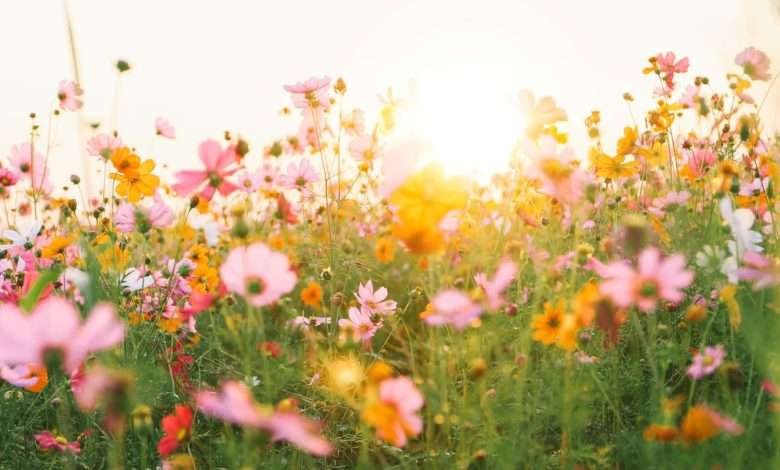6 Ideal Plants to Have at Your Home This Summer

Spring is about to give way to summer in more or less a month. Most of your plants have bloomed and must now weather through the unforgivable heat, lasting at least into early autumn. You have your work of summer-proofing your delicate flora cut out for you.
This summer’s going to be particularly harsh, considering that it hasn’t rained as much this spring as it did last year. California is no stranger to extreme heat, but below-average rainfall since autumn will no doubt exacerbate it. Expect water to be in short supply.
But that’s the beauty of summer plants; they generally don’t need much to survive. Evolution has given them the means to stay alive in such conditions, from far-reaching roots to large water stores. Their hardiness also enables you to arrange lovely summer bouquets, ideal for adorning every table at your home. Of course, they still require adequate TLC on your part.
Plants that bloom in summer meet three criteria: flourish in lots of sunshine, require less water and other resources, and add vitality to a garden on a sunny day. Consider the following summer plants for your garden or bedside table.
- Begonia
Begonias, namely wax begonias, are popular with avid gardeners for their resilience and appeal as bedding plants. Depending on the local climate, these flowers can fill voids in your garden between three and six weeks. While they can tolerate direct sunlight, they grow best in the shade.
However, for begonias to be truly perennial, they must be between Zones 9 and 10, where average minimum temperatures are between 10oF and 40oF. They only need water once every few days or when the earth around them is parched. Proper drainage is essential, as pooling water around their tubers can cause rotting.
- Sunflower
 They’re called sunflowers for a reason. True to their name, these flowers flourish under plenty of sunlight and can withstand the driest of seasons. But they can take the entire summer to bloom, so planting has to begin either in spring or early summer.
They’re called sunflowers for a reason. True to their name, these flowers flourish under plenty of sunlight and can withstand the driest of seasons. But they can take the entire summer to bloom, so planting has to begin either in spring or early summer.
Sunflowers make excellent centerpieces for a variety of summer bouquets. Because of their sunny appearance (pun intended), they can help cheer up someone who’s been down in the dumps for far too long. Among indigenous American tribes, sunflowers also represent a bountiful harvest, given that they use these flowers as a food source.
- Swiss Cheese Plant
Monstera deliciosa, popularly known as the Swiss Cheese plant, seems like it’s been feasted on by a group of hungry caterpillars. Native to the tropical regions of North and South America, the plant is a fitting addition to a summer garden.
Believe it or not, those holes serve a practical purpose in their natural habitat. Christopher Muir, a biology professor at Indiana University, found that the holes allow the plant to increase its surface area for less energy. It improves its ability to absorb sunlight, which isn’t always consistent under the canopies of rainforests.
You’d want these plants to grow under indirect sunlight, as their leaves can easily burn under hours of direct sunlight. They require watering once a week or until the soil gets slightly dry. Spray some water onto the leaves to maintain humidity.
- Catmint
A cousin to the catnip (Nepeta cataria), catmint (Nepeta faassenii) is a must-have summer plant in a cat owner’s garden. One key difference between the two is that catnip takes the appearance of a grassy plant, while catmint is more akin to a flower.
Catmint can tolerate dry conditions and thrive in either direct or indirect sunlight. However, these plants must be half a meter apart when planting them, as overcrowding can promote mildew growth in the summer humidity. Some species of catmint can also compete aggressively with other plants for nutrients, so it’s better to grow them in pots first.
Despite being related, catmint doesn’t induce as much euphoria in cats as catnip (though it depends on the breed). In some cases, the plant discourages cats from overrunning the garden. But you may want to keep a handful of catnip ready if your feline friend demands its fix.
- Lavender
Lavender can give your garden a royal look. While it grows better in cooler climates, it also thrives in warmer zones like its natural habitat in the Mediterranean. They usually come in purple but also various colors like pale pink, rose, and yellow.
In growing lavender, putting them in the shade and overwatering is the worst that you can do to it. It flourishes in dry soil and under direct sunlight, similar to most areas around the Mediterranean. Having a section in your garden dedicated to lavender also provides you an ingredient you can use for various things, from putting them on a salad to making essential oils.
- Daylily
Daylilies are one of the easiest plants to cultivate, especially for beginners. Thriving between zones 3 to 11, they’re also one of the most adaptable and resilient. They also don’t take much to maintain, needing less water and more sunlight.
These flowers also spread like wildfire, as they managed to reach Europe and North America from Asia without much difficulty. Back then, they didn’t generate much interest among gardeners due to their lack of crossbreeding potential. However, since Arlow Stout’s breeding program in 1934, daylilies have become common almost everywhere, with an estimated 80,000 variants.
Conclusion
As harsh summer can be, some hardy plants can still add beauty to your garden or interior without much effort. You can leave them out in the sun to bloom in all their glory, keeping them watered only occasionally. If you want a summer garden in time for the season, the best time to prepare is now.






